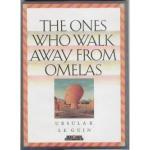
|
| Name: _________________________ | Period: ___________________ |
This test consists of 5 multiple choice questions, 5 short answer questions, and 10 short essay questions.
Multiple Choice Questions
1. What aspect of law enforcement does LeGuin say Omelas lacks?
(a) Investigators.
(b) Magistrates.
(c) The secret police.
(d) Judges.
2. What two instruments are named when the narrator describes the livelier processions in Omelas?
(a) Tambourines and gongs.
(b) Cymbals and fiddles.
(c) Drums and tambourines.
(d) Violins and cellos.
3. Omelas is described in the first paragraph as being "bright-" what?
(a) Clouded.
(b) Colored.
(c) Torn.
(d) Towered.
4. Omelas is located nearby what natural feature?
(a) A forest.
(b) A plateau.
(c) A sea.
(d) A waterfall.
5. What two modes of transportation does LeGuin imagine the people of Omelas using in order to reach the Festival of Summer?
(a) Trains and trams.
(b) Boats and helicopters.
(c) Bicycles and trains.
(d) People-movers and escalators.
Short Answer Questions
1. What sort of clothing is worn by the people who exercise the horses?
2. LeGuin supposes that the people of Omelas have what number of rules and laws?
3. LeGuin states that modern society only considers what element of life to be "interesting" (3)?
4. LeGuin states that which two adjectives are helpful to define when deciding what elements to include within Omelas?
5. LeGuin asserts that the people of Omelas are not what kind of human ancestors?
Short Essay Questions
1. How do the processions that include Omelas's livelier residents differ from other processions?
2. What is LeGuin's purpose in describing the horses' minimal gear?
3. What is the first question asked within Paragraph 2 and how does it contrast with the story so far?
4. What do the bells symbolize within the celebration of the Festival of Summer?
5. What event is taking place at the start of the story "The Ones Who Walk Away from Omelas"?
6. What evidence is present to suggest that there is gender equality in Omelas?
7. LeGuin sees what kind of danger in modern society's method of perceiving evil?
8. What evidence is given for the conclusion that people in Omelas do indeed have different identities?
9. After the narrator states that Omelas sounds "like a city in a fairy tale," (3) what action does she suggest the reader take?
10. The narrator at one point worries that what elements of her portrait of Omelas will make it seem too "goody-goody" (3) for the reader?
|
This section contains 944 words (approx. 4 pages at 300 words per page) |

|




